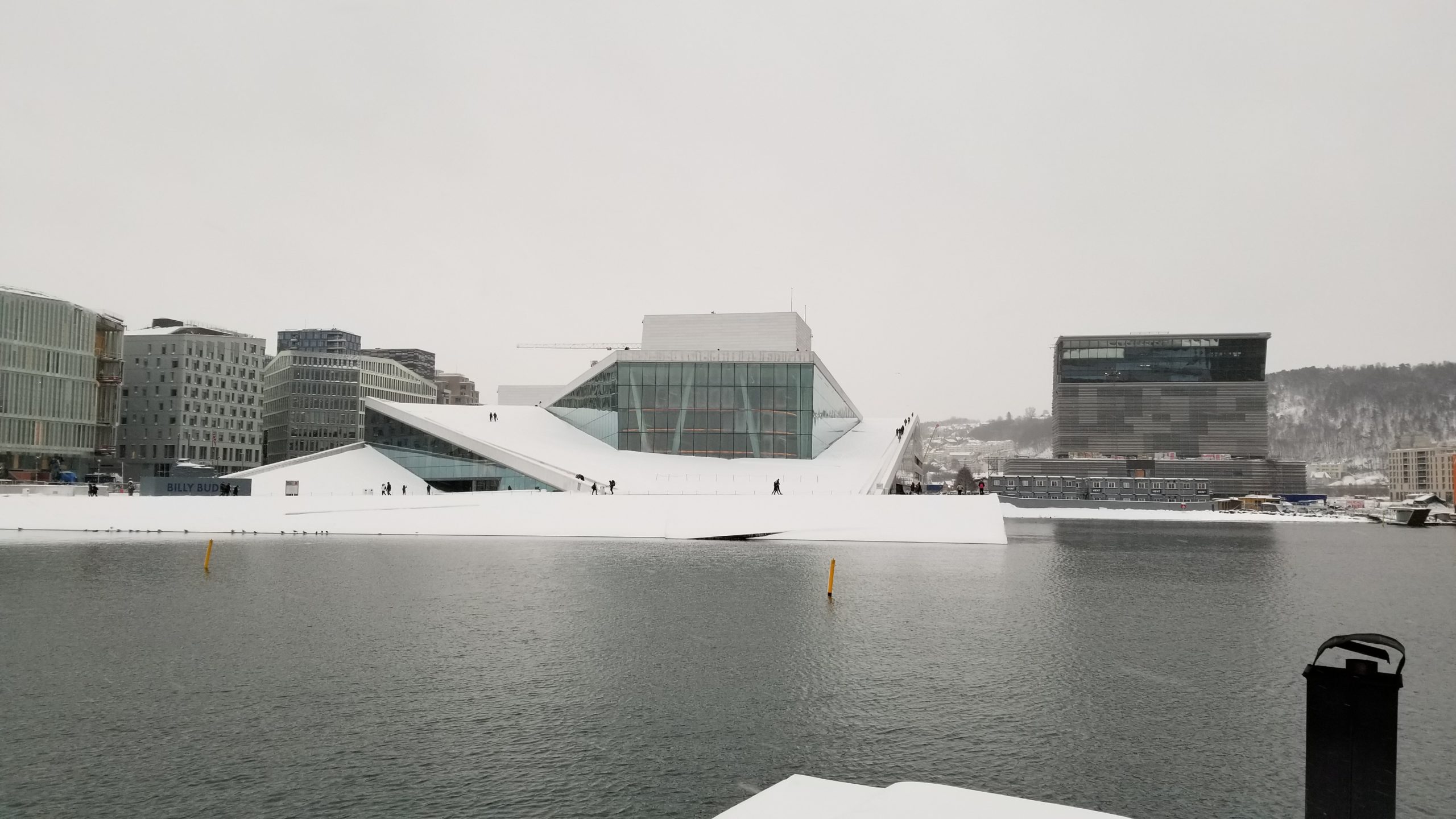
Oslo’s water front
Oslo’s central waterfront in winter is covered in snow and lined with boats. The harbor is a living reminder that this is a country of sailors, and farmers. Today was my day to explore the waterfront and the fortress, along with all the other sights that I could take in.
But nothing opens until 11 am like it’s winter or something. My first planned stop was the modern art museum. But I got an early start after I wrote for a bit in the hostel lobby, and once the sun came up.
It was still cold, wet, and snowy as I did get out the door. Piles of snow and slush everywhere made it a challenge to keep your footing. But the challenge was accepted.
The Aker Brygge neighborhood around the Modern museum is really new and also really expensive. The area is a combination of housing and a lot of very nice shops.
Water canals wind through the high-rises and there are boat docks all along the canals. No boats were docked up at that time of year. Part of the water comes from the flow of the river as it meets the fjord. So it freezes up faster than the Oslo Fjord. But all along the fjord marina, tons of boats were still docked.
The art museum itself is a wonderful design. Like a lot of Modern art museums, it has a lot of open space. The space is used well and the collection is one of the better ones that I have seen. The museum has two parts, the other half you have to walk out and across to get to. That section had a lot more galleries in it.
Even the grounds had some nice sculpture areas, but a lot of it was covered by snow.
Standing above the waterfront and the harbor is Akershus Fortress. Built and rebuilt over the centuries, it also served as a Nazi headquarters during the occupation from 1941-44. Well-kept the tour is a wonderful look at the military and royal history of Oslo and Norway. While not having the golden opulence of other European fortresses, it gives off the aura of just how Norwegians saw and see themselves, practical and few frills.
It was nice to go in winter, with a lot fewer people, and you could just sit and soak in the rooms.
Just outside the entrance to the complex and on the way up to the main fortress entrance, Is the Norway Resistance museum. In April 1940, the Nazis invaded Norway, a neutral country, in an effort to defend the north flank of their regime. The Norwegians, who had only gotten their national independence less than 40 years earlier, put up a fight for 62 days before being forced to surrender or have most of the population slaughtered.
But still, for the next four years, most Norwegians refused to cooperate. Schools shut down and sports organizations closed their doors, rather than placate to and teach Nazi ideology. The Resistance Museum the fight against an overwhelming force and the people’s refusal to just go along.
Walking around the grounds of the fortress, which is a challenge in the winter, offers some great views of the waterfront of Oslo. The weather was a little foggy and misty, so you couldn’t see very far. With winter you get short days, and the grounds offer a great place to watch the sunset.
Also around the fortress grounds is a decent welcoming center and military history of Oslo and the fortress. Which is free to get into and worth the time to get a better sense of the history of the area.